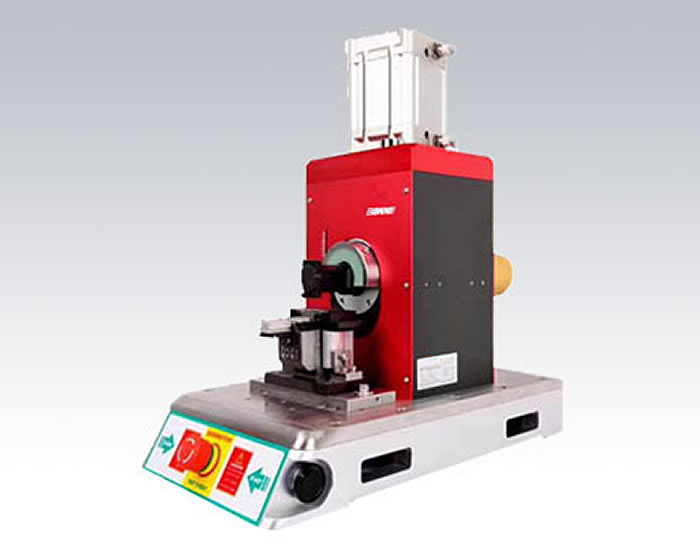
Plastic welding has penetrated into the processing of various parts in the industrial field, and the production of daily necessities cannot be separated from plastic welding technology. Plastic welding is one of the main methods for secondary processing of thermoplastics. Taking advantage of the melting characteristics of thermoplastics, the surface of two plastic parts can be melted at the same time through thermal action, and the two parts can be combined under the action of external forces, which is called welding. According to different heating methods, plastic welding can be divided into heating tool welding, induction welding, friction welding, ultrasonic welding, high-frequency welding, hot air welding, etc.
Plastic welding manufacturer: hot melt welding
Use a heating tool (such as hot plate, hot band or brazing iron) to directly heat the two plastic surfaces welded together until there is enough molten layer on the surface, then remove the heating tool and compress the two surfaces until the molten part cools down. The process of connecting two plastic parts together is called heating tool welding. Suitable for welding plastic products such as organic glass, rigid PVC, soft PVC, high-density polyethylene, polytetrafluoroethylene, polycarbonate, polypropylene, polyethylene, etc. At present, common PP-R attachments and other connections use this process.
Plastic welding manufacturer: high-frequency induction welding
The metal insert is placed on the surface of the plastic weld, temporarily bonded under appropriate pressure, and then placed in an AC magnetic field to generate induction heat for the metal insert, melting and bonding the plastic. After cooling, welding products can be obtained. This welding method is called test welding. This welding method is applicable to almost all thermoplastic welding.
Plastic welding manufacturer: ultrasonic welding
Ultrasonic welding is also hot welding. Heat is generated by high-frequency mechanical vibration of plastics using ultrasound. When the ultrasonic wave is attracted to the plastic surface to be welded, the plastic particles are stimulated by the ultrasonic wave and vibrate rapidly, generating mechanical vibration. Through re conversion heating, the temperature of the welded plastic surface rises and melts, while the temperature of the non welded surface does not rise. The ultrasonic wave is introduced into the welding plastic through the welding joint. When the welded joint stops working, the plastic will immediately cool and cure. According to the structure of the ultrasonic welding machine, various thermoplastics can be welded.
Plastic welding manufacturer: high-frequency welding (high-frequency welding)
Two overlapping plastics are placed between two electrodes, which are subject to high-frequency current. Under the action of the electromagnetic field, the free charge of the plastic moves naturally (polarizes) repeatedly with the same frequency (but slightly lags), causing the polarized molecules to vibrate frequently, causing friction, until electric melting. It is suitable for plastics composed of polar molecules, such as films or sheets made of PVC and polyamide.
Plastic Welding Manufacturer: Friction Welding
The friction heat generated by friction between thermoplastics can be melted on the friction surface, and then combined through pressure cooling. This is called friction welding. This method is applicable to cylindrical products. 6. Hot air welding
Hot air welding is easy to use and operate, especially suitable for welding plastic plates. The process includes heating compressed air (or inert gas) to the temperature required for welding plastics through a torch heater, and then heating the flux and electrode to the molten state with preheating gas, so as to fix the weld together with less pressure.
Plastic welding manufacturer: laser plastic welding
Laser welding seems to have developed into a welding method especially suitable for specific applications. Compared with ultrasonic welding, vibration welding, hot plate welding and other welding methods, it has cost and performance advantages.
One of the main advantages of laser welding is that the plastic workpiece can be heated by non-contact heating method to plasticize the complex three-dimensional welding surface. Therefore, infrared welding technology is particularly suitable for complex curved parts and large structural plastic parts.
With the increasing demand for lightweight tools and the rapid development of the plastic industry, plastics will be more and more widely used in life, and various plastic welding methods will also get considerable development. The level of plastic welding technology seems to have become one of the indicators to measure the level of automobile production technology and new material development. It is certain that various plastic welding methods will play a greater role.



 Your location:
Your location:

 Tel.: 0755-27163020
Tel.: 0755-27163020 Mobile:15989539998 Mr.Su
Mobile:15989539998 Mr.Su Email: szmaijin@163.com
Email: szmaijin@163.com Website: www.maijinkeji.net
Website: www.maijinkeji.net Address: 3F, Building 5, Huixin Intelligent Industrial Park, Xinhu Street, Guangming District, Shenzhen
Address: 3F, Building 5, Huixin Intelligent Industrial Park, Xinhu Street, Guangming District, Shenzhen
 Website
Website